What Is Fortified Wine?
Fortified wine is a type of wine made by adding a distilled spirit, typically brandy, to the base wine during the fermentation process. This addition of spirits not only increases the alcohol content of the wine but also enhances its flavor and longevity. Fortified wines have a rich history dating back centuries and are known for their versatility and complexity. From the sweet and nutty flavors of sherry to the rich and robust character of port, fortified wines offer a wide range of styles to suit every palate. Whether enjoyed as an aperitif, dessert wine, or cooking ingredient, fortified wine adds depth and sophistication to any occasion.
Fortified vs Unfortified Wine
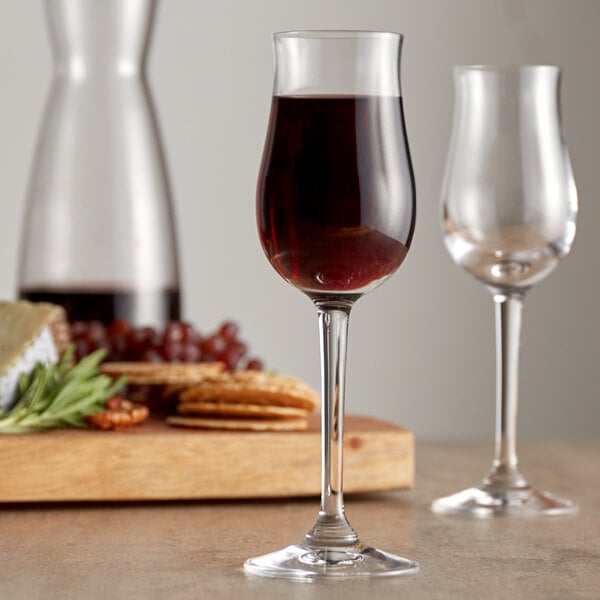
Fortified wine and unfortified wine may look similar, but there are key differences that set them apart. Fortified wine is made by adding a distilled spirit, usually brandy or cognac, during the fermentation process. This increases the ABV and can give fortified wine a distinct sweetness and body. On the other hand, unfortified wine is made solely from fermented grape juice, allowing the natural flavors and characteristics of the grape to shine through. While unfortified wine is served with dinner, fortified wine is often enjoyed before or after the meal due to its higher alcohol content and richer flavor profile.
How Are Fortified Wines Made?
To make fortified wine, a distilled spirit is added to wine during the fermentation process. The sweetness of the fortified wine is determined by when the spirit is added to the wine. If the wine is fortified during the fermentation process, the final product will be sweet. If the spirit is added after, the fortified wine will be dry.
Fermentation is the natural chemical reaction that converts the sugars in grapes into alcohol. During this process, yeast consumes the sugar and produces alcohol and carbon dioxide. When added early, the spirit halts the yeast, leaving a higher percentage of grape sugar behind. If the spirit is added after, the yeast will have more time to consume the sugars, resulting in dry fortified wine.
Types of Fortified Wine
From rich and sweet to dry and complex, each variety of fortified wine offers a unique taste experience. We take a closer look at some of the most popular types of fortified wine:
1. Port Wine
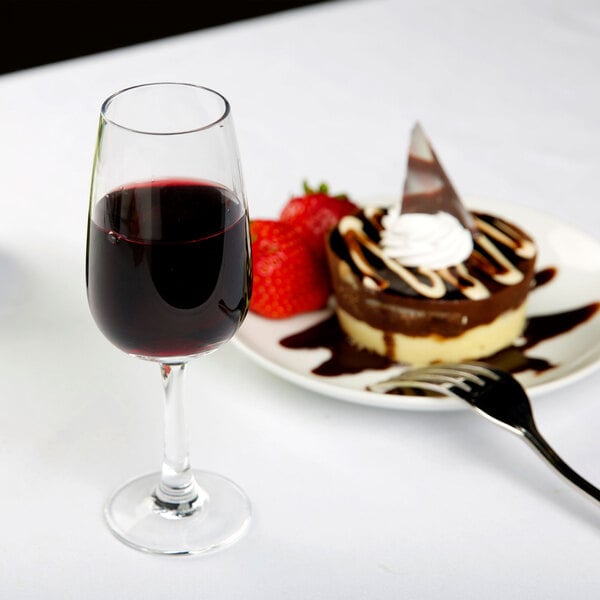
Port wine is a sweet, fortified wine that hails from the Douro Valley in Portugal. It is typically rich, full-bodied, and often enjoyed as a dessert wine. Port wine is made by adding brandy in the early stages of fermentation to preserve the natural sweetness of the grapes. It is then usually aged in oak barrels. With its deep flavors of dark fruits, chocolate, and spices, port wine is a classic choice for pairing with charcuterie boards or indulging in after a meal.
- Port Wine Origin: Douro Valley, Portugal
- Port Wine ABV: ~20%
- What Does Port Taste Like? Fruits like raspberry and blackberry, dark chocolate, nutty, and spicy
- Types of Port Wine: Tawny port (aged and slightly sweet), ruby port (young and fruity), rose port (light pink and fragrant)
- Port Wine Uses: Digestif (dessert wine), port sauce
2. Vermouth
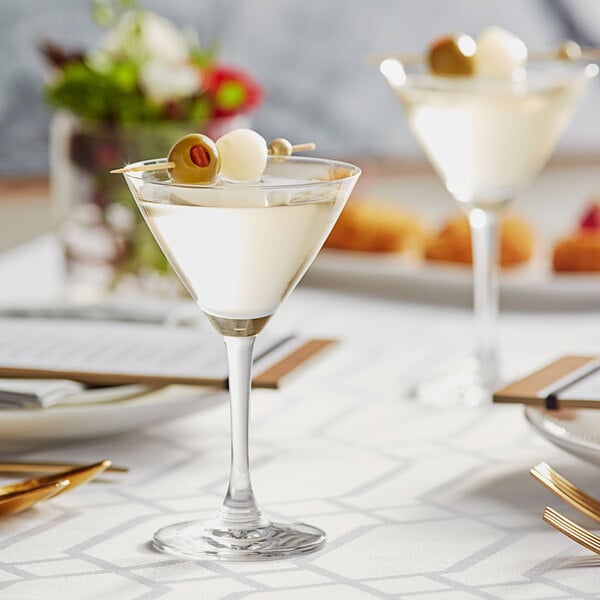
Vermouth isn’t like most traditional fortified wines. It falls into a subcategory known as aromatized wine, which is fortified wine blended with botanicals, including herbs, spices, and roots. Vermouth is commonly used as an ingredient in cocktails such as the classic Martini and Negroni. You’ll find vermouth in two main styles: sweet (red) and dry (white). Sweet vermouth is often enjoyed on its own or mixed with other spirits, while dry vermouth adds a touch of complexity and herbal notes to cocktails.
- Vermouth Origin: Specific origin is unknown, mostly associated with Torino, Italy
- Vermouth ABV: 16% - 18%
- What Does Vermouth Taste Like? Slightly sweet, botanical notes of chamomile, cinnamon, cloves, and wormwood, hints of citrus, and a pleasant bitterness
- Types of Vermouth: Red vermouth or Italian vermouth (sweet and fruity), white vermouth or French vermouth (dry and slightly bitter)
- Vermouth Uses: Aperitif, cocktails like Martinis, Manhattans, and Negronis
3. Sherry
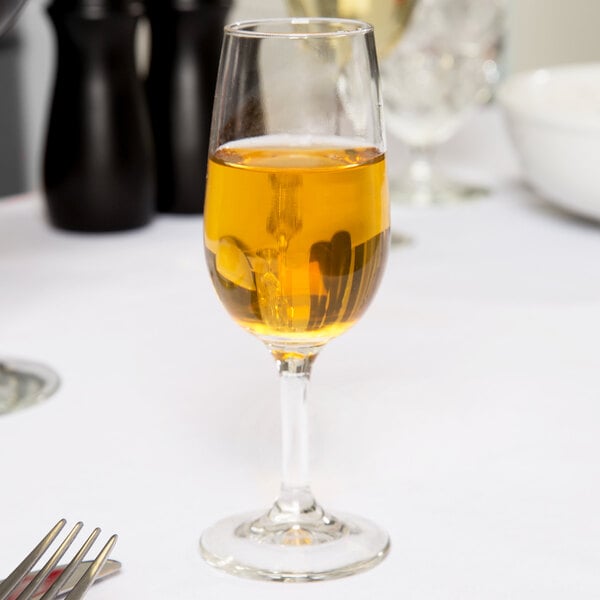
Originating from the Jerez region in Spain, sherry is a versatile fortified wine with a wide range of styles. From bone-dry to lusciously sweet, there is a sherry to suit every palate. Sherry is made using a unique aging process called the solera system, where younger wines are blended with older ones to create a consistent flavor profile. This results in a complex wine with nutty, caramel, and dried fruit notes. Sherry can be enjoyed as an aperitif, paired with tapas, or used in cooking to add depth and richness to dishes.
- Sherry Origin: Jerez region, Spain
- Sherry ABV: 15% - 22%
- What Does Sherry Taste Like? Ranges from very sweet and fruity to very dry and nutty
- Types of Sherry: Fino and Manzanilla (pale and dry), Amontillado and Oloroso (amber and dry to medium-dry), Pedro Ximenez (dark and very sweet)
- Sherry Uses: Aperitif, dessert wine, cocktails like Sherry Cobbler and the Adonis
Sherry vs Port
The difference between port and sherry is their origin and preparation. Sherry, originating from Spain, is known for its wide range of styles, including Fino, Amontillado, and Oloroso, each offering a unique taste profile. Sherry is made from a process of blending wines and is often enjoyed as an aperitif or with hors d’oeuvres. Port wine, hailing from Portugal, is a sweet and rich wine with flavors of dark fruits and chocolate. It is fortified with brandy and is typically enjoyed as a dessert wine, pairing well with cheese or chocolate-based desserts.
4. Madeira
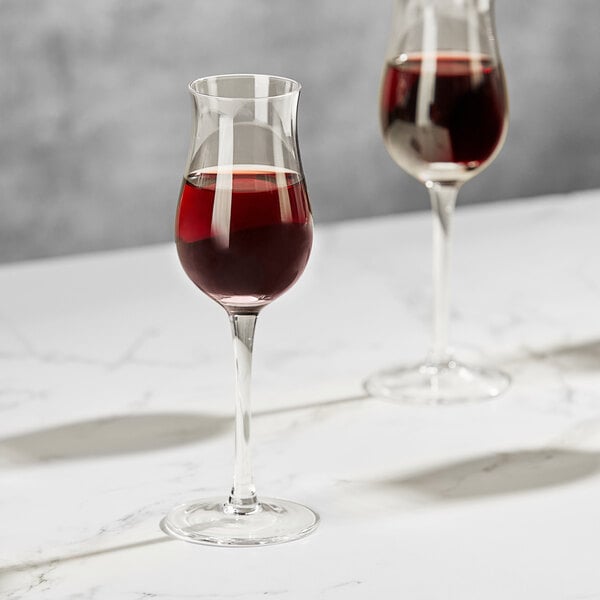
Madeira is a fortified wine produced on the Portuguese island of Madeira. It is known for its unique aging process called estufagem, which involves exposing the wine to heat and oxygen. This deliberate “cooking” process gives Madeira its distinct flavors of caramel, toffee, and roasted nuts. Madeira comes in various styles, including dry, medium-dry, medium-sweet, and sweet, based on the different types of grapes used in the blending process. It is often enjoyed as a dessert wine or paired with rich, savory dishes.
- Madeira Origin: Madeira, Portugal
- Madeira ABV: 18% - 20%
- What Does Madeira Taste Like? Woodsy, caramel, toffee, and roasted nuts
- Types of Madeira: Sercial (bright and crisp), Verdelho (smoky and spicy), Boal or Bual (sweet and aromatic), Malmsey (rich and very sweet)
- Madeira Uses: Aperitif, digestif, paired with chicken, pork, or fish dishes
Madeira vs Port
While both are fortified wines, the difference between Madeira and port wine is the way they are fermented and aged. Madeira, hailing from the Portuguese island of the same name, is known for its unique aging process, which involves exposure to heat and oxygen. This gives Madeira its distinct caramelized, nutty flavors. Port, originating from the Douro Valley in Portugal, is typically aged in oak barrels and offers a wide range of styles, from sweet and fruity to rich and complex.
5. Marsala
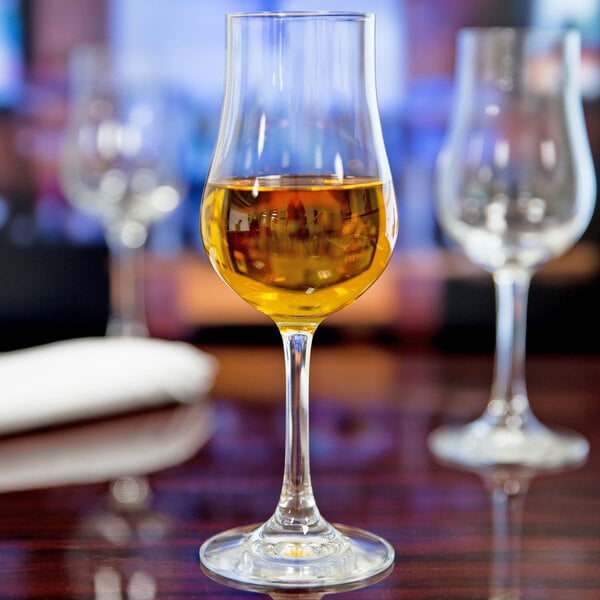
Marsala is a fortified wine from the Italian island of Sicily. It is made using a blend of indigenous grape varieties and fortified with grape spirit. Marsala comes in different styles, ranging from dry to sweet, from deep reds to pale whites. The flavor is impacted by the grapes used in the blend, often having notes of dried fruits, spices, and caramel. Aside from being served on its own, Marsala is often used in cooking to add depth of flavor to sauces, risottos, and desserts.
- Marsala Origin: Marsala, Sicily
- Marsala ABV: 15% - 20%
- What Does Marsala Taste Like? Nutty, vanilla, brown sugar, and apricot
- Types of Marsala: Ambra Marsala (amber and nutty), Oro Marsala (golden with notes of raisins and licorice), Rubino Marsala (ruby red, dry, and fruity)
- Marsala Uses: Aperitif, digestif, sauces and glazes, Chicken Marsala
Madeira vs Marsala
Madeira and Marsala are two popular types of fortified wines that have distinct characteristics and uses. Madeira wine, hailing from the Portuguese island of Madeira, is known for its rich, caramelized flavors and nutty undertones resulting from its estufagem aging process. It is often served with a meal or paired with desserts. Marsala wine, originating from Sicily, Italy, offers a more versatile profile with a range of styles, including dry, semi-dry, and sweet. Marsala is commonly used in cooking, especially in savory dishes like chicken or veal marsala, but it can also be enjoyed on its own as an aperitif or dessert wine.
Sherry vs Marsala
Sherry and Marsala are both popular types of fortified wines made by blending grapes or wines to achieve varying flavor profiles. While both wines are fortified, Sherry is typically aged using a solera system, resulting in a more complex and nuanced taste, whereas Marsala is aged in a more traditional manner. Sherry, originating from Spain, is known for its predominantly dry and nutty flavor profile. Marsala, hailing from Italy, offers a sweeter taste with notes of caramel and dried fruit from the grape varieties used to make it.
Fortified Wine FAQs
Here are some of the most common questions when it comes to fortified wine:
How to Drink Fortified Wine
Fortified wine is a versatile beverage that can be enjoyed in a variety of ways depending on which type you choose. Follow these tips to learn how to serve fortified wine:
- Serve fortified wine at the right temperature. While different types of fortified wine may have different ideal serving temperatures, a general rule of thumb is to serve them slightly chilled or at room temperature.
- Consider using dessert wine glassware. Opt for a small, tulip-shaped glass to enhance the aromas and flavors of the wine.
- Enjoy it on its own or with food. Fortified wine is perfect as an aperitif or digestif, but it also pairs well with a range of foods. From cheeses and nuts to chocolate and desserts, there are countless culinary combinations to explore.
How Long Does Fortified Wine Last?
Fortified wine has a longer shelf life compared to regular wines. Once opened, a bottle of fortified wine, such as port or sherry, can last for several weeks, if not months. This is because the higher alcohol content acts as a preservative, helping to prevent spoilage. However, it's important to note that the flavor and quality of the wine may start to diminish after a couple of weeks. To ensure the best taste, it's recommended to consume fortified wine within a month of opening.
How to Store Fortified Wine
When it comes to storing fortified wine, there are a few key factors to keep in mind:
- Cool, dark place: Store fortified wine in a cool, dark place, away from direct sunlight and heat sources. This helps to preserve the flavors and prevent the wine from oxidizing.
- Upright: Fortified wine should be stored upright to minimize the risk of cork damage and leakage.
- Consistent temperature: It's best to store fortified wine at a consistent temperature, ideally between 55 - 65 degrees Fahrenheit (12 - 18 degrees Celsius), to ensure no change to its flavor profile.
Fortified wine is a versatile and flavorful beverage that has been enjoyed for centuries. With its higher alcohol content and added fortification, it offers a unique and distinct taste profile that pairs well with a variety of dishes. Whether you're sipping on a glass of port after dinner or using Marsala to enhance a savory sauce, fortified wine adds depth and complexity to any culinary experience. Impress your guests by adding fortified wines to your bar drink menu.



